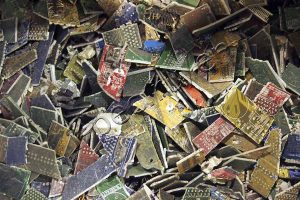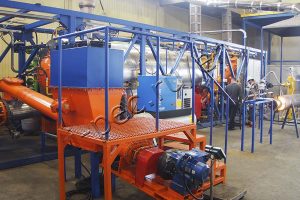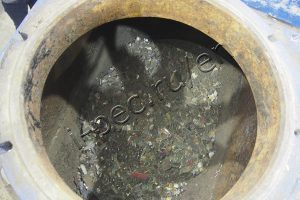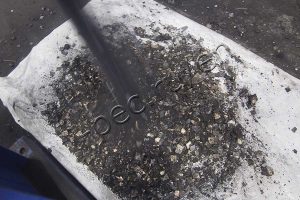Electronic waste: problems of recycling
The hero of the action movie, throwing out a mobile phone after each conversation, should not think about what happens to the gadget according to the scenario. Meanwhile, it is not alone: around 160 million mobile phones are thrown out annually in the world, and this is not a movie, but only a drop in the sea of WEEE – Waste Electrical and Electronic Equipment.
By historical standards, e-waste is the youngest type of waste. The EU directive, for the first time systemically providing the WEEE turnover, was adopted only in the 1980s. Despite the fact that the total amount of electronic waste in the world does not exceed 5% of the total, the technological, environmental and financial challenges created by this type of waste are very significant.
Electronic waste contains a whole range of hazardous pollutants, among which beryllium, mercury, arsenic, lead, cadmium, polyvinyl chloride (which is neutral by itself, but its processing cause an acute environmental issue) can be distinguished. However, along with pollutants WEEE contains precious metals such as gold, silver, platinum and palladium, which makes this waste a valuable secondary resource.
Due to the danger of electronic waste, its export is prohibited by the EU Directive, in this industry, as well as everywhere, where the vital necessity is faced with government regulation, a shadow market has arisen, financial volumes of which, according to the popular Spanish newspaper El Mundo, are quite comparable with the world drug trafficking. According to UNEP estimates, up to 50 million tons of WEEE are generated annually in the world, and their amount is growing and will grow faster than the amount of other types of waste.
In the city of Guiyu (China, Guangdong) is the largest e-garbage dump in the world, which collected 56% of the world’s electronic waste. Landfills, warehouses and workshops are scattered around the city and villages in an area of 55 thousand km2 (much more than the area of the Moscow region), groundwater of this region and 60–100 km around is poisoned and unsuitable for drinking. At the same time, all the secondary raw materials in this territory bring the city up to $ 3 billion annually. Interesting that the law does not allow the import of electronic waste into China. For comparison: according to Apple report in 2016 the company extracted almost a ton of gold when was processing its old devices, which brought about $ 40 million of net profit. Obviously, WEEE recycling is a promising and profitable (see table).
Classification of printed circuit boards, depending on the gold content
Category | Gold content, ppm | Source (the list is not exhaustive and final) |
Ultra low | up to 20 | Non-prepared CRT monitor boards (TV and PC), HiFi, |
Very low | up to 50 | Prepared CRT monitor boards (TV and PC), HiFi, power sources, small household appliances, etc. |
Low | up to 100 | Leached IT-boards (from very low to low) |
Medium | up to 200 | IT (server PC, printer units), different connectors, LCD |
High | up to 300 | IT/telecommunication boards |
Very high | over 300 | Cordless telephones , IT-components (processors, etc.) |
Table 1. Classification of printed circuit boards, depending on the gold content
In accordance with the provisions of the Basel Convention on the Control of Transboundary Movements of Hazardous Wastes and Their Disposal, the governments should ensure the proper disposal of disrupted electronics. However, in 2016 only 20% of all e-waste produced was collected and recycled despite 66% of the world’s population live in 67 countries around the world, where e-waste management is legislated.
However, WEEE is a potential source of valuable materials. The most beneficial for the processing are printed circuit boards (photo 1), computer processors, system boards of phones and gadgets. In the latest the content of precious metals is much higher.
Technologies of electronic waste and printed circuit boards processing
One of the processing technologies involves the loading of e-waste into a specialized furnace, where metal smelting and technological burning of organic components of electronic boards takes place. These furnaces, as a rule, are expensive imported equipment, involving complex processes. In addition, the diversity of the chemical composition of the raw materials leads to the following problems:
- smelting chemistry greatly complicates the presence of insulating materials and plastics;
- ceramic impurities (e.g. from computer processors) under the blast smelting result in the loss of extracted metal;
- high copper content affects the consumption of additives and lowers the content of noble metals.
Hydrometallurgical processing is also widely used, using nitric acid or copper nitrate solution in industrial quantities. This process requires a powerful wastewater treatment system, generates toxins and carcinogens. In addition, such technologies are very energy-intensive, much of the waste of electronic scrap is still to be disposed of, plastics and textolite are lost in the process.
Continuous pyrolysis unit TDP-2 for electronic waste processing
The international company Eco-CARBON proposes to carry out the process in two stages and to use waste pyrolysis (pilot runs were carried out on the equipment manufactured by IPEC (TDP-2-200 plant) as a technology to produce intermediate raw materials sent for traditional processing then.
Such a solution immediately gives a number of advantages:
- maximum degree of purification from third-party materials with obtaining additional conditioned products;
- high degree of extraction of precious materials;
- the dry residue from the first stage has an increased concentration of precious metals and is more homogenized, which facilitates the production of the precious metals from the intermediate raw materials.
Unlike the traditional process, where the organic components of the boards are burned with the subsequent cleaning of combustion products, the proposed technology also provides fuel production: up to 30% of the initial volume for epoxy-based boards and up to 18% for boards based on phenol-formaldehyde resins.
Recycling of waste electronic components at TDP-2: technologial stages
The processing of scrap electronic components is similar to the processing of any other organic material suitable for pyrolysis. Primary raw materials are pre-crushed and subjected to heating in the pyrolysis chamber without oxygen. The resulting volatile and liquid hydrocarbons are sent to the gas-liquid separator for splitting. Due to the high content of plastics in the boards, it is possible to use the products of the process as fuel to maintain the temperature in the reactor. According to laboratory tests, the heat of combustion is 34–37 MJ/kg. It is important to note that liquid effluents at this stage of the process are not formed, and gas emissions are only products of combustion of diesel and pyrolysis fuel, the purification of which is not so difficult. In the dry residue of the pyrolysis stage of the process – carbon, precious metals, copper fraction and fiberglass.
It is known that for primary raw materials (ore materials) the content of platinum in a total amount of 2–3 g per 1 ton is considered very cost-effective in processing [1]. The content of precious metals in the secondary electronic raw materials is calculated in kilograms or even tens of kilograms per 1 ton. That is why a number of civilized countries, on the one hand, limits the use of various substances in electronics; on the other hand, it organizes the safe processing of electronic waste with the support and complement of the corresponding legislative base.
To get acquainted with the model range and order the equipment, please, visit the Catalogue of TDP pyrolysis units. IPEC specialists will answer all questions concerning electronic waste processing and help you to choose the optimal technological solution adapted to the needs of the facility.
Authors: Konstantin Ladygin, Semyon Stompel, PhD (Tech.), Safe Technologies, LLC.
Article “Electronic waste (WEEE) treatment recycling using thermal decomposition technology” was published in the journal “Solid Municipal Waste”, №6, 2018.
Using materials/any part of it, reference to the authorship is obligatory.
[1] M. SH. Barkan, M. I. Chinenkova. Technology of precious metals extraction from electrical waste.




